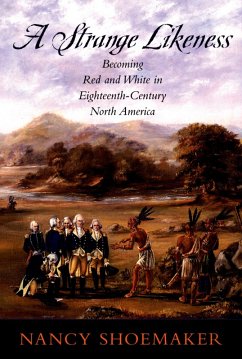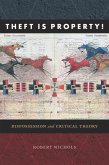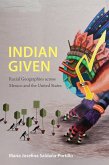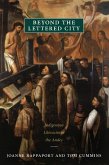The histories told about American Indian and European encounters on the frontiers of North America are usually about cultural conflict. This book takes a different tack by looking at how much Indians and Europeans had in common. In six chapters, this book compares Indian and European ideas about land, government, recordkeeping, international alliances, gender, and the human body. Focusing on eastern North America in the 18th century, up through the end of the Seven Years War in 1763, each chapter discusses how Indians and Europeans shared some core beliefs and practices. Paradoxically, the more American Indians and Europeans came to know each other, the more they came to see each other as different, so different indeed that they appeared to be each other's opposite. European colonists thought Indians a primitive people, laudable perhaps for their simplicity but not destined to possess and rule over North America. Simultaneously, Indians came to view Europeans as their antithesis, equally despicable for their insatiable greed and love of money. Thus, even though American Indians and Europeans started the 18th century with ideas in common, they ended the century convinced of their intractable differences. The 18th century was a crucial moment in American history, as British colonists and their Anglo-American successors rapidly pushed westward, sometimes making peace and sometimes making war with the powerful Indian nations-the Iroquois and Creek confederacies, Cherokee nation, and other Native peoples-standing between them and the west. But the 18th century also left an important legacy in the world of ideas, as Indians and Europeans abandoned an initial willingness to recognize in each other a common humanity so as to instead develop new ideas rooted in the conviction that, by custom and perhaps even by nature, Native Americans and Europeans were peoples fundamentally at odds.
Dieser Download kann aus rechtlichen Gründen nur mit Rechnungsadresse in A, B, BG, CY, CZ, D, DK, EW, E, FIN, F, GR, HR, H, IRL, I, LT, L, LR, M, NL, PL, P, R, S, SLO, SK ausgeliefert werden.
In his impressive elucidation of the Old English verse features which Pound carries through to his 'Saxonist prosody', Jones makes a hefty, lasting contribution to our enjoyment of parts of Pound's sharply sensory, taut and restrained free verse... [Jones's book] is erudite and deeply informed, drawing on years of research and reflection... intellectually convincing, while most valuable, perhaps, for its astute and responsive treatment of particular poems. Strange Likeness has stimulated my own search for finds: among the four major poets Jones looks at closely, in the books of those he glances at in passing, and among those younger generations to whom Pound, Auden, Morgan and Heaney hand on both models to follow and spurs to creativity. Anthony Moore, Essays in Criticism









